What is USB
Definition
USB stands for universal serial bus, and it is a technology that allows computers to communicate with other devices. The USB standard was created by many American corporations, including IBM, Intel Corporation, and Microsoft Corporation. It was first released in 1996 as an easier way to connect electronics to personal computers (PCs).
A computer could have had one or two serial ports, a parallel port, mouse and keyboard connectors, and, in certain circumstances, a joystick connector before USB technology. A USB port was a standardized means to connect a wide range of devices while also providing considerable speed benefits over previous sorts of connections.
More About USB
The adoption of USB technology was gradual at first. Before USB-capable devices became accessible, computer makers were sluggish to add the ports to their systems, and peripheral device manufacturers were similarly slow to promote USB goods before the ports were standard on new PCs. Furthermore, when the technology was originally developed, operating systems provided very rudimentary support. However, the first model of Apple Inc.'s iMac, released in 1998, altered this. Apple effectively forced other manufacturers to embrace the standard by creating a popular computer that only had USB connections. USB has become the industry standard for peripherals, including printers, scanners, and keyboards. The standard even prompted the creation of new technologies, such as portable flash-memory drives, which have now supplanted floppy discs.
Since its debut, USB technology has seen several changes. Upgraded adapters allowed users to connect older serial equipment like network switches to USB ports. Each iteration increases the connection's speed while keeping earlier revisions backward compatible.
USB Versions
Several significant USB standards have existed, the most recent of which being USB4:
- USB4: USB4 supports 40 Gbps, according to the Thunderbolt 3 standard (40,960 Mbps).
- USB 3.2 Gen 2x2: Compliant devices, also known as USB 3.2 devices, may transfer data at a rate of 20 Gbps (20,480 Mbps), known as Superspeed+ USB dual-lane.
- USB 3.2 Gen 2: Compliant devices, formerly known as USB 3.1, can transport data at a rate of 10 Gbps (10,240 Mbps), which is referred to as Superspeed+.
- USB 3.2 Gen 1: Compliant hardware, formerly known as USB 3.0, may achieve a maximum transfer rate of 5 Gbps (5,120 Mbps), dubbed SuperSpeed USB.
- USB 2.0: High-Speed USB devices, USB 2.0 compatible, may attain a maximum transfer rate of 480 Mbps.
- USB 1.1: USB 1.1 devices, often known as Full Speed USB, can transmit data at 12 Mbps.
Most USB devices and cables now use USB 2.0, with an increasing number using USB 3.0.
Types of USB Connectors
Here are the most common types of USB Connectors:
- USB-A:
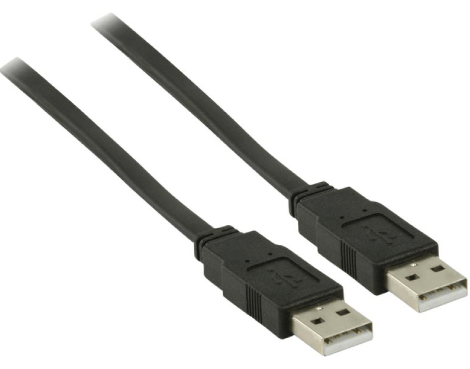
This is the most common USB connector, which may be found on almost every cable's one end.It's a rectangular connection with only one way of fitting.
Almost every desktop and laptop computer has at least one USB-A connector. One or more can be found in many TVs, game systems, vehicles, media players, and other gadgets.
There aren't any cables with USB-A connectors on each end since there aren't any situations when this would be beneficial. Using a USB-A connection to connect two laptops might harm both of them.
- USB-B:
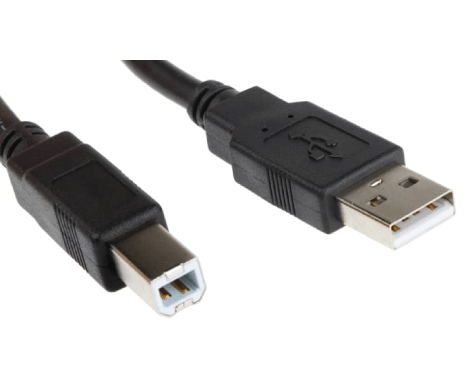
This is an older connector that isn't used as frequently as it formerly was. It connects to a printer or similar equipment and is practically square on one end. Aside from these applications, it has been mostly supplanted by the newer standards listed below.
- Mini-USB:
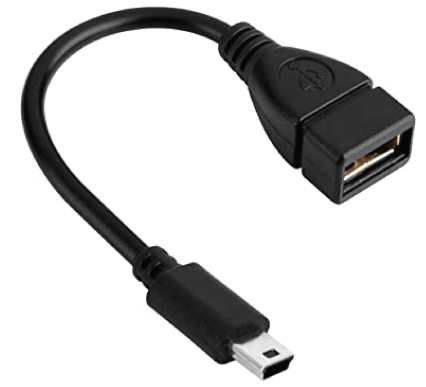
This smaller connection type is ideal for mobile devices, as the name implies. Although micro-USB has mainly replaced it, it may still be found on some cameras, MP3 players, and other devices.
- Micro-USB:
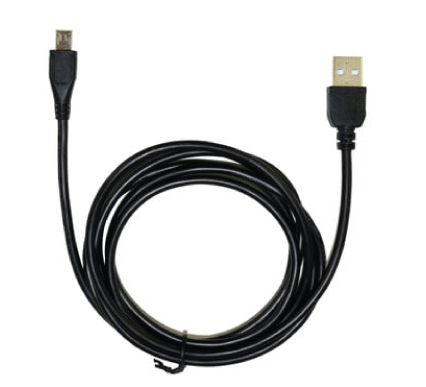
This is a tiny connector found on a variety of portable devices. A micro-USB connector is found on Android phones to external power packs to Bluetooth headphones. On the other hand, some devices have switched to the newer USB-C connection.
- USB-C:
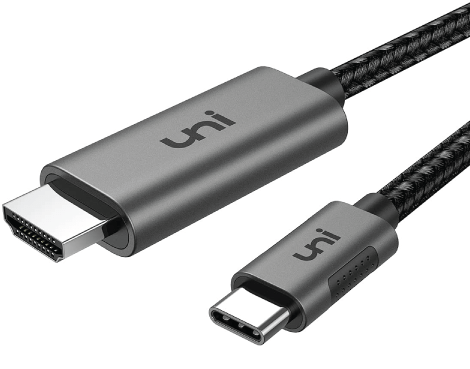
This is the most recent USB specification. Unlike previous connections, which often had USB-A on one end and a different kind on the other, USB-C allows two devices with USB-C ports to communicate. It's also reversible, which sets it apart from the other sorts.
Device makers are slowly adopting USB-C. The Samsung Galaxy S9 and the Google Pixel are two recent Android phones that support USB-C.Only USB-C ports are available on Apple's newest MacBook and MacBook Pro models.
You've probably heard of the Thunderbolt hardware interface if you're familiar with USB-C. This specification enables a USB-C port and cable to carry data fast, connect to high-resolution screens, and perform other functions.
Thunderbolt 3 isn't supported by every USB-C connector, though. For example, Apple's newest MacBook Pro models include several Thunderbolt 3 USB-C connectors.However, the normal MacBook's single USB-C connector does not support Thunderbolt 3.
USB-C is a little perplexing as a result of all of this. The port might be a standard USB port, like the ones listed above, or a multi-purpose jack. The device determines this.
- Lightning Cable:
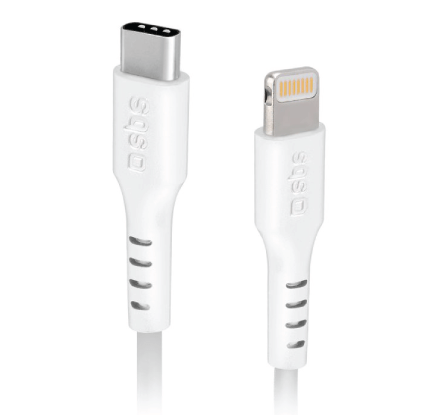
Since late 2012, Apple has utilized its Lightning cable in its mobile devices. This isn't a USB standard, but it's included for completeness' sake. UtilizedIt’s reversible, just like USB-C.
Users of iPhones and iPads utilize a Lightning to USB-A connector to charge, connect to a computer, and more.
Characteristics of USB
- USB is a "plug and play" type of device. A single USB host controller may support a maximum of 127 peripherals.
- The maximum speed of a USB device is 480 Mbps (for USB 2.0).
- Without a hub, individual USB cables may be up to 5 meters long and 40 meters long.
- USB may be powered either by itself or via a computer.
- Some USB devices will automatically go into "sleep" mode when a computer goes into power-saving mode.
Advantages of USB
The advantages of USB are as below:
- User-friendliness
- For many purposes, this is an acceptable data rate.
- Reliable connector system
- A wide range of connection types and sizes are available.
- Cost-effective
Disadvantages of USB
The disadvantages of USB are as below:
- The length of USB cords is restricted.
- Some very high-speed peripheral devices demand continuous rates that the USB standard does not provide.
- Annual payments and membership in the association are required to use the USB logos on the product.
USB Speed Standards
USB has changed its specifications numerous times throughout the years. In addition to the sorts of connectors on either end, each USB cable and the port have a speed requirement.
1. USB 1.x
Although USB 1.0 was introduced in 1996, it wasn't until late 1998 that USB 1.1 arrived, thus kicking off the USB era. Only USB-A and USB-B connections may be used, and it's old by today's standards.
Today, you're unlikely to come across any USB 1.x devices or cables.
2. USB 2.0
With the 2.0 version in 2000, USB acquired a new look. This version supports substantially faster speeds than version 1 and some of the new ports listed above.
It also includes USB OTG (On-the-Go) capability, allowing two USB devices to connect directly. A conventional USB keyboard, for example, maybe connected to an Android phone using an adapter.
Many mice, keyboards, and other similar devices still utilize USB 2.0. If there is no USB 3 marks on a cable or port, it is most likely USB 2.0, as explained below.
3. USB 3.x
USB 3.0 was released in 2008, followed by USB 3.1 and 3.2. Its most significant improvement is its much quicker transmission rates than USB 2.0.
The color pattern for USB 3.x cables and ports is blue, with a lightning bolt emblem. Backward compatibility means you can use a USB 3.x cable in a USB 2.0 port and vice versa. However, you will only be able to transfer data at USB 2.0 rates.
USB 3 is used by several external hard drives and high-end flash devices. USB-C cables are always USB 3.0 compatible. For USB 3.0 compatibility, older cable types, such as micro-USB and unique connection type, is required. This type of connection is commonly seen on external hard drives, allowing them to use USB 3 speeds.
USB devices
USB devices connect to your computer in a variety of ways these days. A few of the most popular are listed here.
- External drive
- Gamepad
- Headset
- iPod or other MP3 players
- Digital Camera
- Keyboard
- Keypad
- Microphone
- Mouse
- Printer
- Joystick
- Jumpdrive aka thumb drive
- Speakers
- Tablet
- Webcams
- Scanner
- Smartphone
USB cables - length and type
USB cables come in various lengths, extending from a few inches to over 16 feet. A USB cable for high-speed devices can be as long as 16 feet 5 inches (5 meters), whereas a USB cable for low-speed devices can be as short as 9 feet 10 inches (3 meters).Because of data transfer timing and the potential of data loss, certain limit lengths have been set if longer cable lengths are used. By connecting two USB cables to a USB hub, you may simply double the distance between the two devices.
USB cables come in a wide range of styles and sizes.As previously stated, USB has two alternative transfer rates (2.0 and 3.0). Similarly, multiple USB cables are available to match those speeds. You may acquire a USB 2.0 cable to use with a USB 2.0 device or a USB 3.0 cable to use with a USB 3.0 device.
USB extension cables can be connected to one end of a USB cable to expand the connection's length. Unless you're using a USB hub to amplify the signal, don't extend the connection over the maximum USB data transfer distance of 16 feet 5 inches.